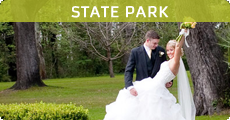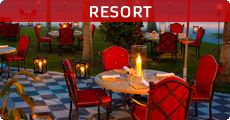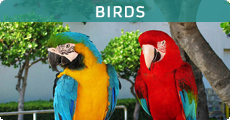Apalachicola
History
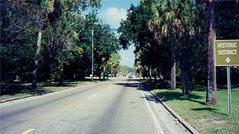 The current location of Apalachicola was occupied by a trading post called
Cottonton. The town was integrated
as West Point in 1987. Act of the Legislative Council of the Territory
of Florida framed the current name of the city as Apalachicola in1831.
"Apalachicola" is translated as "Land Of The Friendly People"
or "The People on the Other Side" according to the American
Indian language.
The current location of Apalachicola was occupied by a trading post called
Cottonton. The town was integrated
as West Point in 1987. Act of the Legislative Council of the Territory
of Florida framed the current name of the city as Apalachicola in1831.
"Apalachicola" is translated as "Land Of The Friendly People"
or "The People on the Other Side" according to the American
Indian language.
Apalachicola was the third busiest port in the Gulf of Mexico; this was before the advancement of railways in the Gulf States. The Greek immigrants were responsible for bringing up sponge trade and this was the major trade in the town during in the late 1800s and early 1900s. Seafood workers, including oyster harvesters and shimmers find their work in the Apalachicola port. The port of Apalachicola hosts the famous Florida Seafood Festival. St. Vincent Island, Flag, Sand, St. George Island, and Cape St. George Island are the regions, which protect the bay well.
Act of the Legislative Council of the Territory of Florida included the Trinity Episcopal Church; the popular monument in Apalachicola on Feb 11, 1837. The popularity of the building is because it was one of the earliest prefabricated buildings in America. Schooner from New York was responsible for shipping the framework of the building and then it was assembled in Apalachicola with wooden dowels.
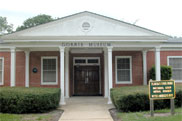 Modern refrigeration and air-conditioning was made possible only due
to the discovery cold-air process of refrigeration
and patented an ice machine by Dr. John Gorrie, he was a great Apalachicola
physician. He discovered this amazing fact as the result of experiments
to lower the temperatures of fever patients. There is a monument of this
great physician in the city and a model of his ice machine is on display
in the John Gorrie Museum.
Modern refrigeration and air-conditioning was made possible only due
to the discovery cold-air process of refrigeration
and patented an ice machine by Dr. John Gorrie, he was a great Apalachicola
physician. He discovered this amazing fact as the result of experiments
to lower the temperatures of fever patients. There is a monument of this
great physician in the city and a model of his ice machine is on display
in the John Gorrie Museum.
Geography
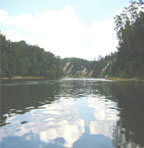 Apalachicola is positioned in the northwest division of the state, at
29°43'31?N, 84°59'33?W (29.725203, -84.992534),
GR1 on Apalachicola Bay and at the mouth of the Apalachicola River.
Apalachicola is positioned in the northwest division of the state, at
29°43'31?N, 84°59'33?W (29.725203, -84.992534),
GR1 on Apalachicola Bay and at the mouth of the Apalachicola River.
The city has a total area of 6.9 km² (2.7 mi²). 4.9 km² (1.9 mi²) of the city is occupied by land and 2.0 km² (0.8 mi²) of the city is occupied by water. The total area is 29.32% water. These facts were reported by the United States Census Bureau.
Demographics
The permanent residents in the city were 2,334 people, 1,006 households, and 608 families as of the censusGR2 of 2000. The density of population in the city was reported to be 479.3/km² (1,242.1/mi²). There were 1,207 housing units at an average density of 247.9/km² (642.3/mi²). The city has a blend of 63.41% White, 34.92% African American, and 0.17% Native. American, 0.39% Asian, 0.00% Pacific Islander, 0.47% from other races, and 0.64% from two or more races. The Hispanic or Latino of any race form around1.67% of the population.
1,006 households are present in the city out of which 23.4% had children who are below 18 living them , 41.8% were couples who were living together, 15.0% had single females with no husbands, and 39.5% were broken families. 34.7% of all homes had single or solitary induviduals and 14.8% had old aged people who are above 65 living alone. The average household size and the average family sizes are 2.24 and 2.27 respectively.
Tourism
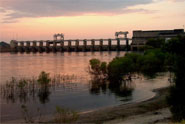 Kayaking, fishing, boating, and biking are all popular activities in
the city. Guests or tourists can cruise on the River, witness the celebrated
Apalachicola riverside and learn about the task the river has played in
the area’s
olden times and wealth, then head up river to analyze the many untamed
and remote bogs and slough. St. Vincent Island National Wildlife Refuge,
Cape St. George State Preserve, home of the Cape St. George Lighthouse
and Dog Island are the famous barrier islands in the city. The city offers
a lot of adventures if you want to enjoy one then rent a kayak, canoe
or boat and travel ahead on your own.
Kayaking, fishing, boating, and biking are all popular activities in
the city. Guests or tourists can cruise on the River, witness the celebrated
Apalachicola riverside and learn about the task the river has played in
the area’s
olden times and wealth, then head up river to analyze the many untamed
and remote bogs and slough. St. Vincent Island National Wildlife Refuge,
Cape St. George State Preserve, home of the Cape St. George Lighthouse
and Dog Island are the famous barrier islands in the city. The city offers
a lot of adventures if you want to enjoy one then rent a kayak, canoe
or boat and travel ahead on your own.
Apalachicola National Forest or Tate’s Hell State Forest offers
exciting land based adventures. Hiking, hunting and fishing in thousands
of acres of primal forests are popular activities. The lovely beaches
and other form of natural beauties are great attractions in this city.
You can rent a bike both on the beach and in the legendary district.
You can also relax yourselves in the deserted beaches or under the lined
tall trees of the city.







